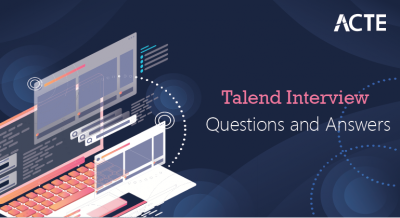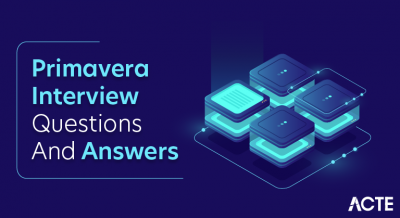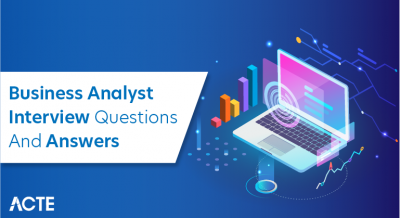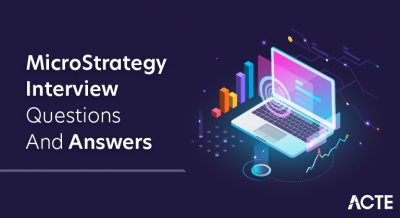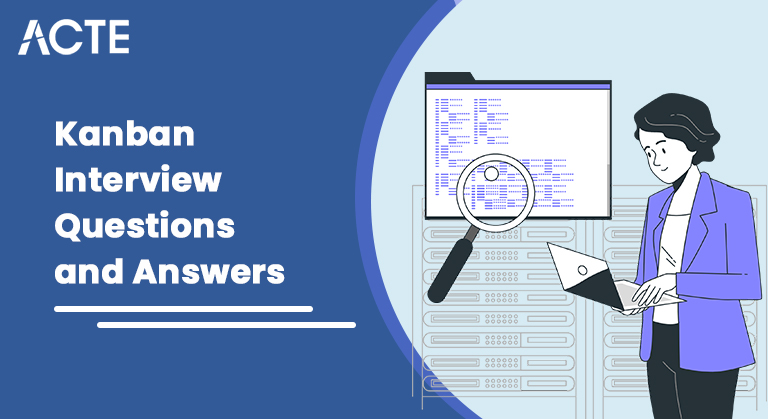
These Kanban Interview Questions have been designed specially to get you acquainted with the nature of questions you may encounter during your interview for the subject of Kanban . As per my experience good interviewers hardly plan to ask any particular question during your interview, normally questions start with some basic concept of the subject and later they continue based on further discussion and what you answer. we are going to cover top 100 Kanban Interview questions along with their detailed answers. We will be covering Kanban scenario based interview questions, interview questions for freshers as well as Kanban interview questions and answers for experienced.
1. What is Kanban, and how does it differ from other Agile methodologies?
Ans:
Kanban is an Agile methodology that focuses on continuous delivery. Unlike Scrum, it doesn’t have fixed timeframes and allows work to be pulled as capacity permits.
2. Can you explain the principles of the Kanban method?
Ans:
Visualize Work: Represent workflow visually on a Kanban board.
Limit Work in Progress (WIP): Set explicit limits on tasks in each column to optimize flow.
Manage Flow: Focus on smooth, continuous work progression.
Make Policies Explicit: Clearly define workflow policies for consistency.
Feedback Loops: Regularly review and reflect on process performance.
Improve Collaboratively: Foster a culture of continuous team improvement.
Evolve Experimentally: Iteratively experiment with small process changes.
Classes of Service: Differentiate types of work based on priority.
Explicit Process Policies: Clearly define and communicate workflow policies.
Manage Flow, Not Resources: Focus on optimizing overall work flow.
3. Explain the role of the “Cumulative Flow Diagram” in predicting future project timelines.
Ans:
The Cumulative Flow Diagram helps predict future timelines by visualizing work stages and identifying bottlenecks, allowing teams to make informed adjustments for improved efficiency.
4. How does Kanban handle changing priorities?
Ans:
Kanban allows for flexibility in responding to changing priorities by adjusting the order in which work items are pulled from the backlog.
5. How do you visualize a Kanban board, and what information does it provide?
Ans:
A Kanban board visually represents the workflow, including columns for To Do, In Progress, and Done. It provides a clear overview of work status.
6. Explain the concept of “Pull System” in Kanban.
Ans:
The “Pull System” in Kanban is a customer-driven approach where work is initiated based on actual demand. It utilizes WIP limits, visual signals like Kanban cards, and continuous flow to optimize resources and reduce waste. This just-in-time system promotes flexibility, adaptability, and a seamless progression of work through the process.
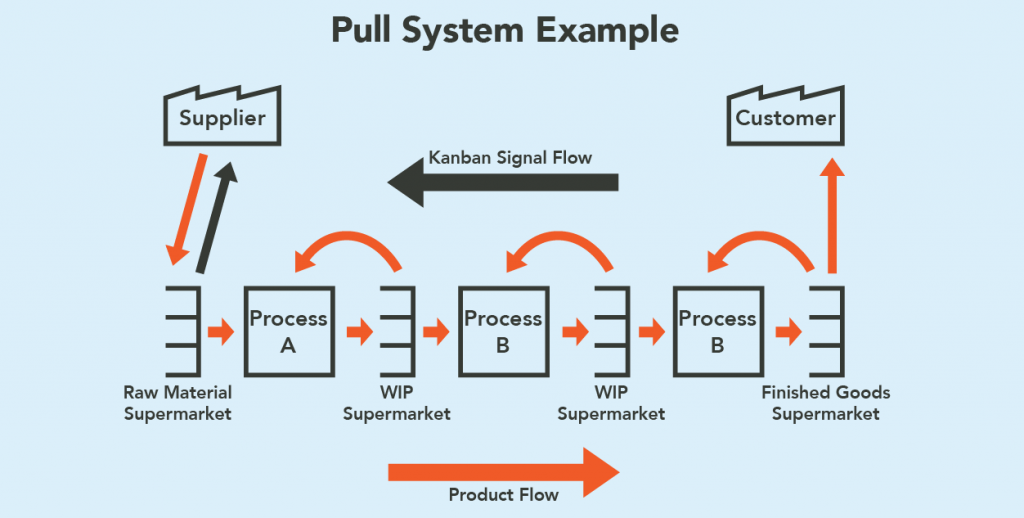
7. How does Kanban support continuous improvement?
Ans:
Kanban encourages regular retrospectives to identify bottlenecks and areas for improvement, fostering a culture of continuous learning and adaptation.
8. What is the role of a Kanban Board in a project?
Ans:
The Kanban Board in a project serves to visually represent the workflow, track task status, and enhance transparency. It identifies bottlenecks, encourages collaboration, and sets Work in Progress (WIP) limits to maintain a steady flow.
The board prioritizes tasks, facilitates daily stand-ups, and adapts to changing requirements. Its continuous visibility fosters communication and allows teams to analyze and improve their processes throughout the project.
9. How do you measure the performance of a Kanban team?
Ans:
Key performance indicators (KPIs) in Kanban include lead time, cycle time, and throughput, which measure how quickly work moves through the system.
10. How can Kanban be applied in non-software development contexts?
Ans:
Kanban principles are adaptable and can be applied in various contexts such as marketing, HR, and manufacturing, where visualizing and managing workflow is beneficial.
11. What is the impact of violating WIP limits in Kanban?
Ans:
Violating WIP limits can lead to inefficiencies, increased lead times, and decreased overall productivity due to task switching and overloading team members.
12. How does Kanban handle dependencies between tasks?
Ans:
Kanban emphasizes identifying and managing dependencies early. Visualization helps teams recognize dependencies and plan accordingly to minimize delays.
13. How does Kanban handle unplanned work or urgent issues?
Ans:
Kanban addresses unplanned work by reserving capacity, using classes of service for prioritization, and incorporating visual signals. Teams may adjust WIP limits, designate specific lanes for urgent work, and collaborate to swiftly resolve issues. Daily stand-ups and continuous improvement cycles enhance adaptability, while intentional buffer time and SLAs further support handling unplanned tasks efficiently. Overall, Kanban’s flexible nature allows teams to manage both planned and unplanned work seamlessly.
14. Can you discuss the concept of “Classes of Service” in Kanban?
Ans:
Classes of Service in Kanban categorize work items based on priority and characteristics, helping teams manage and prioritize tasks effectively.
15. Explain the concept of “Cumulative Flow Diagram” in Kanban.
Ans:
- The Cumulative Flow Diagram (CFD) in Kanban is a visual representation that provides insights into the flow of work over time. It displays the cumulative number of tasks in various stages of the workflow, offering a snapshot of work distribution and process efficiency.
- The horizontal axis represents time, while the vertical axis represents the number of tasks. Different colored lines or areas on the diagram represent the various stages of the workflow. By analyzing the CFD, teams can identify bottlenecks, measure lead times, and make informed decisions to improve their process.
16. How can Kanban be integrated with DevOps practices?
Ans:
Kanban integrates with DevOps by providing a visual representation of the development pipeline, promoting collaboration, and enabling continuous delivery.
17. How does Kanban contribute to risk management in projects?
Ans:
Kanban’s visual nature allows teams to identify risks early and adapt to changes, improving risk management through transparency and continuous improvement.
18. How do you handle a situation where a team member consistently exceeds WIP limits?
Ans:
Address the issue through coaching and collaboration. Understand the reasons for exceeding limits, provide support, and work together to find a solution.
19. How do you determine the appropriate WIP limits for a team?
Ans:
WIP limits should be set collaboratively, considering team capacity, historical performance, and the need for balance between responsiveness and efficiency.
20. How does Kanban support a culture of continuous delivery?
Ans:
Kanban supports continuous delivery by emphasizing a steady flow of work, minimizing bottlenecks, and encouraging teams to optimize processes continually.
21. Explain the concept of “Swimlanes” in a Kanban board.
Ans:
- Swimlanes in a Kanban board are visual divisions representing different aspects of the workflow. They can categorize tasks based on teams, priority levels, workflow stages, or project milestones.
- Swimlanes enhance organization, prioritize work, and promote collaboration by assigning responsibilities to specific teams or individuals. Customizable and flexible, they provide a structured approach to managing tasks within a Kanban system.
22. How does Kanban handle stakeholder communication and visibility?
Ans:
Kanban promotes transparency by making the workflow visible to stakeholders on the board, fostering better communication and understanding of project progress.
23. Can you discuss the relationship between Kanban and Lean principles?
Ans:
| Aspect | Kanban | Lean Principles | |
| Foundation | Emerges from Lean manufacturing philosophy. | Rooted in Lean thinking, aiming to eliminate waste. | |
| Waste Reduction | Focuses on identifying and eliminating waste in processes. | Emphasizes reducing waste to maximize customer value. | |
| Visual Management | Promotes visual management, e.g., Kanban boards. | Advocates for visual tools to enhance understanding and transparency. | |
| Pull System | Utilizes a pull system based on actual demand. | Implements pull systems to prevent overproduction. | |
| Continuous Improvement | Embraces Kaizen for continuous improvement. | Encourages regular reviews, identifying areas for improvement. | |
| Customer Focus | Prioritizes customer value in workflow. | Focuses on delivering value to customers to enhance satisfaction. | |
| Flexibility & Adaptability | Adaptable to changes, allowing flexibility in workflows. | Values flexibility and responsiveness to customer needs. | |
| Empowering Teams | Empowers teams to make decisions and take ownership. | Decentralizes decision-making, empowering teams for responsiveness. |
24. What is the significance of the “Little’s Law” in Kanban?
Ans:
Little’s Law in Kanban establishes a relationship between lead time, throughput, and work in progress, providing insights into system performance and efficiency.
25. How does Kanban handle bottlenecks in the workflow?
Ans:
Kanban visualizes bottlenecks, allowing teams to identify and address them promptly. By managing WIP limits and collaborating, teams can optimize their workflow.
26. Explain the role of a Kanban System Architect in a project.
Ans:
A Kanban System Architect helps design and implement Kanban systems, ensuring alignment with organizational goals, and providing guidance on best practices.
27. How can Kanban be applied in a service-oriented industry, such as customer support?
Ans:
In customer support, Kanban helps manage and prioritize tickets, visualize workloads, and optimize response times, leading to better customer satisfaction.
28. Discuss the importance of feedback loops in the Kanban methodology.
Ans:
Feedback loops are crucial in Kanban as they enable continuous improvement. They provide a mechanism for teams to regularly reflect on their performance, identify challenges, and implement adjustments. These loops, often facilitated through regular meetings like daily stand-ups or retrospectives, foster a culture of learning and adaptation. By obtaining feedback, teams can enhance their processes, optimize workflow, and address issues promptly, contributing to increased efficiency and better outcomes in the Kanban methodology.
29. How does Kanban address the challenge of multitasking within a team?
Ans:
Kanban discourages multitasking by limiting WIP, encouraging teams to focus on completing tasks before taking on new work, improving overall efficiency.
30. Can you provide an example of a successful Kanban implementation in a real-world scenario?
Ans:
One example is XYZ company, which increased productivity by 30% after implementing Kanban, reducing lead times and improving overall collaboration among team members.
31. Explain the concept of “Kanban Cadences” and their role in a project.
Ans:
Kanban Cadences include regular meetings like daily stand-ups and retrospectives, providing opportunities for the team to synchronize, plan, and reflect on their work.
32. How does Kanban facilitate a culture of continuous learning within a team?
Ans:
Kanban promotes a culture of continuous learning by encouraging retrospectives, where teams reflect on their performance, identify areas for improvement, and implement changes.
33. Discuss the impact of “Limited WIP” on team collaboration and communication.
Ans:
Limited WIP encourages better collaboration and communication by preventing teams from taking on too much work at once, ensuring a focus on completing tasks.
34. How can Kanban be used to manage and optimize a product backlog?
Ans:
Kanban helps manage a product backlog by visualizing and prioritizing tasks, ensuring the team works on high-priority items and adapts to changing requirements.
35. Explain the concept of “Lead Time” and its significance in Kanban.
Ans:
Lead Time in Kanban measures the time it takes for a work item to move from the request stage to completion, providing insights into overall process efficiency.
36. How can Kanban be used in a portfolio management context?
Ans:
Kanban can be applied in portfolio management by visualizing and managing the flow of work across multiple projects, helping organizations prioritize and deliver value.
37.Discuss how Kanban fosters continuous improvement at the organizational level.
Ans:
Kanban contributes to organizational improvement by promoting adaptive planning, minimizing waste, and encouraging collaboration across teams and departments.
38. How does Kanban support the concept of “Just-in-Time” delivery?
Ans:
Demand-Driven Workflow: Work initiated based on customer demand.
Pull System: Work pulled into stages based on capacity and demand.
WIP Limits: Limits prevent excess work and ensure focus on completion.
Continuous Flow: Promotes a continuous flow of work, reducing lead times.
Reducing Waste: Minimizes waste associated with overproduction and excess inventory.
Visual Signals: Kanban board provides real-time visibility for task status.
Flexibility and Adaptability: Adapts to changing customer needs with quick response.
Efficient Resource Utilization: Focus on WIP limits, flow optimization, and continuous improvement supports effective resource utilization.
39. Can you give an example of a team effectively resolving a bottleneck with Kanban?
Ans:
In a previous project, the team identified a bottleneck in code review. By adjusting WIP limits and improving the review process, they reduced lead times and improved efficiency.
40. How can Kanban be utilized in a distributed or remote team environment?
Ans:
Kanban is adaptable to remote work by utilizing digital Kanban boards and collaboration tools, ensuring transparency and effective communication among distributed team members.
41. Explain the concept of “Kanban Pull Signals” and their role in a visual management system.
Ans:
Kanban Pull Signals, such as visual markers or cards, indicate when a team can pull new work. They enhance communication and coordination within the team.
42. How does Kanban address the challenge of unevenly distributed workloads among team members?
Ans:
Kanban addresses uneven workloads by visualizing individual work assignments, allowing teams to redistribute tasks based on capacity and skills.
43. Discuss the role of “Customer Feedback Loops” in Kanban.
Ans:
Customer feedback loops in Kanban help teams adapt to changing requirements, ensuring that the delivered product aligns with customer expectations and needs.
44. In what ways can Kanban be applied in the context of software maintenance and support?
Ans:
Kanban is effective in software maintenance by helping teams prioritize and respond to support tickets, manage ongoing tasks, and ensure timely resolutions.
45. How does Kanban promote a culture of accountability within a team?
Ans:
Kanban promotes accountability by making work visible, allowing team members to take ownership of tasks, and fostering a sense of responsibility for the overall workflow.
46. Discuss the concept of “Work Item Aging” in Kanban and its implications.
Ans:
Work Item Aging refers to the time a task spends in the system. Monitoring aging helps teams identify stagnant items and address delays or inefficiencies.
47. How can Kanban be integrated with Scrum in a hybrid Agile framework?
Ans:
Kanban and Scrum can be combined by using Kanban to manage workflow and Scrum for structured iterations, providing flexibility and adaptability in project management.
48. Explain the role of the “Definition of Done” in a Kanban workflow.
Ans:
The Definition of Done in Kanban sets clear criteria for when a task is considered complete, ensuring consistency and quality in the delivery of work items.
49. How does Kanban contribute to team empowerment and autonomy?
Ans:
Kanban empowers teams by allowing them to self-manage and make decisions on task prioritization, providing autonomy in how work is executed.
50. Can you discuss the concept of “Kaizen” and its application in a Kanban environment?
Ans:
Kaizen, or continuous improvement, is integral to Kanban. Teams regularly reflect on their processes, identify areas for improvement, and implement changes to enhance efficiency.
51. Explain how Kanban can be used to manage dependencies between multiple teams.
Ans:
Kanban visualizes dependencies between teams on a shared board, allowing for better coordination, communication, and identification of potential bottlenecks.
52. How does Kanban handle the challenge of fluctuating demand for different types of work?
Ans:
Kanban adapts to fluctuating demand by allowing teams to prioritize and pull work based on changing requirements, ensuring flexibility in response to demand shifts.
53. Discuss the role of Kanban in fostering a culture of innovation within a team.
Ans:
Kanban fosters innovation by encouraging teams to experiment with process improvements, continuously adapt to changes, and find creative solutions to challenges.
54. How can Kanban be utilized in a project with fixed deadlines and deliverables?
Ans:
Kanban can be adapted to fixed deadlines by setting work priorities, managing WIP limits, and ensuring that the team focuses on high-priority items to meet deadlines.
55. Can you explain the concept of “Continuous Delivery” and its alignment with Kanban principles?
Ans:
Continuous Delivery in Kanban emphasizes delivering valuable increments of work regularly. Teams prioritize and pull items based on readiness for delivery, supporting a continuous flow.
56. Discuss the impact of visualizing work on team communication and collaboration in Kanban.
Ans:
Visualizing work in Kanban improves communication by providing a shared understanding of tasks, fostering collaboration, and enabling the team to work cohesively towards common goals.
57. How does Kanban handle the introduction of new features or changes to the workflow?
Ans:
Kanban accommodates changes by allowing teams to adapt their workflow based on evolving requirements, ensuring a flexible and responsive approach to new features.
58. Explain the concept of “Work in Progress Debt” and its implications.
Ans:
Work in Progress Debt refers to the accumulation of incomplete work. Managing WIP limits helps teams avoid this debt, ensuring a focus on completing tasks before taking on new ones.
59. Discuss the role of Kanban in improving time-to-market for products or features.
Ans:
Kanban improves time-to-market by optimizing workflow, minimizing delays, and ensuring a steady flow of work, allowing teams to deliver products or features more efficiently.
60.How does Kanban adapt to highly uncertain and rapidly changing environments?
Ans:
- Kanban thrives in uncertain environments by providing flexibility, adaptability, and a continuous flow of work, allowing teams to respond quickly to changing requirements.
- Remember, these questions are designed to cover a range of topics related to Kanban, and interviewers may tailor questions based on the specific needs of the organization and the role in question.
61. How does Kanban handle team member vacations or absences to ensure workflow continuity?
Ans:
Kanban accommodates absences by visualizing work on the board. The team can collectively decide on workload adjustments and reassign tasks as needed.
62. Can you discuss the role of lead time and cycle time metrics in a Kanban system?
Ans:
Lead time measures the entire process from request to completion, while cycle time focuses on the time a task spends actively being worked on. Both metrics provide insights into process efficiency.
63. In what ways can Kanban be utilized for risk mitigation in project management?
Ans:
Kanban identifies and mitigates risks by visualizing work, allowing teams to proactively address potential issues, and promoting continuous improvement to adapt to changing circumstances.
64. How does Kanban support the concept of “Work in Progress Pull” as opposed to “Work in Progress Push”?
Ans:
Work in Progress Pull in Kanban means teams pull tasks based on their capacity and readiness, ensuring a focus on completing work efficiently rather than being pushed onto them.
65. What is the significance of WIP (Work in Progress) limits in Kanban?
Ans:
- Preventing Overloading
- Ensuring Steady Flow
- Highlighting Bottlenecks
- Encouraging Focus
- Facilitating Continuous Improvement
66. Discuss the impact of Kanban on reducing lead time and enhancing overall project delivery speed.
Ans:
Kanban reduces lead time by optimizing workflow, minimizing bottlenecks, and ensuring a steady flow of work, resulting in faster project delivery.
67. How can Kanban principles be applied to projects with high uncertainty and evolving requirements?
Ans:
Kanban’s adaptability is well-suited for uncertain projects. Teams can regularly reprioritize tasks, adapt to changes, and focus on incremental progress, maintaining flexibility.
68. How does Kanban foster accountability without promoting a blame-oriented culture?
Ans:
Kanban promotes accountability through transparency and continuous improvement. It encourages a blame-free culture by focusing on learning from mistakes and finding collaborative solutions.
69. In what ways does Kanban support the concept of “Customer-Driven Prioritization”?
Ans:
Kanban supports customer-driven prioritization by allowing teams to pull work based on customer needs, ensuring that the most valuable tasks are addressed promptly.
70. Can you discuss the role of Kanban in managing and optimizing a release plan?
Ans:
Kanban helps manage release plans by visualizing work, allowing teams to prioritize tasks, and ensuring a smooth flow of work toward release milestones.
71. How can Kanban be applied in environments where regulatory compliance is a significant concern?
Ans:
Kanban adapts to regulatory requirements by visualizing work, ensuring policies are explicit, and allowing teams to implement necessary compliance measures within their workflow.
72. Explain the concept of “Batch Size” in Kanban and its impact on process efficiency.
Ans:
Batch Size in Kanban refers to the number of work items pulled at once. Smaller batch sizes enhance process efficiency by reducing lead times and improving flow.
73. Discuss the role of Kanban in promoting a balance between efficiency and responsiveness.
Ans:
Kanban balances efficiency and responsiveness by setting WIP limits. This ensures a steady workflow while allowing teams to respond quickly to changing priorities.
74. How does Kanban address the challenge of balancing speed and quality in work delivery?
Ans:
Kanban emphasizes quality by defining clear “Definition of Done” criteria for each task. Teams focus on delivering work that meets these criteria, ensuring high-quality outcomes.
75. Can you provide an example of a team using Kanban to recover from a project setback?
Ans:
In a past project, a Kanban team identified a bottleneck causing delays. By adjusting WIP limits and collaborating on solutions, they recovered and met project deadlines.
76. How does Kanban handle urgent tasks without disrupting the workflow?
Ans:
Kanban accommodates urgent work by allowing teams to reserve a portion of their capacity for such tasks. This ensures flexibility while maintaining a focus on planned work.
77. How does Kanban handle urgent and unplanned work without disrupting the workflow?
Ans:
Kanban fosters individual improvement by encouraging team members to reflect on their work during regular retrospectives, share insights, and collaborate on implementing positive changes.
78. How can Kanban be used to facilitate knowledge sharing and collaboration among team members?
Ans:
Kanban promotes collaboration through visualizing work, encouraging open communication during daily stand-ups, and providing a shared understanding of the team’s progress.
79. Explain the role of Kanban in enhancing the predictability of project delivery timelines.
Ans:
Visualizing Workflow: Kanban boards provide transparency on task progress.
Limiting WIP: Controls work in progress, fostering a steady and controlled flow.
Optimizing Flow: Measures cycle time and lead time, offering insights for predictions.
Stakeholder Communication: Real-time updates promote clear communication.
Continuous Improvement: Regular retrospectives drive incremental changes.
Adaptability to Changes: Kanban’s flexibility accommodates shifting priorities.
Data-Driven Decision Making: Metrics guide decisions for more realistic timelines.
80. Can you discuss the concept of “Incremental Improvement” in Kanban and its significance?
Ans:
- Incremental Improvement in Kanban involves making small, continuous improvements to processes over time. This approach ensures ongoing optimization without major disruptions to workflow.
- These questions cover various aspects of Kanban, and they can help assess a candidate’s knowledge and practical understanding of implementing Kanban principles in different scenarios.
81. How does Kanban handle variability in task complexity and size within a project?
Ans:
Kanban accommodates variability by allowing teams to pull work items based on their capacity, ensuring a focus on completing tasks efficiently regardless of complexity.
82. Explain the role of “Service Level Agreements” (SLAs) in a Kanban system.
Ans:
SLAs in Kanban define expectations for task completion times, ensuring teams have clear targets and enabling them to measure and improve their performance.
83. In what ways can Kanban be adapted for projects that involve both internal and external teams?
Ans:
Kanban can be adapted for collaboration between internal and external teams by visualizing work on a shared board and maintaining transparent communication channels.
84. Discuss how Kanban contributes to resource optimization and preventing overutilization of team members.
Ans:
Kanban prevents overutilization by setting WIP limits, ensuring that team members can focus on completing tasks without becoming overwhelmed and maintaining a healthy work-life balance.
85. How does Kanban suit projects involving both routine tasks and creative, exploratory work?
Ans:
Kanban accommodates projects with a mix of routine tasks and creative work by offering a flexible visual framework. It allows teams to manage and prioritize diverse tasks efficiently, adapting to the dynamic nature of both routine and exploratory aspects.
86. Explain the concept of “Blocked Work Items” in Kanban and how teams can address them.
Ans:
Blocked work items in Kanban are tasks that cannot progress. Teams address them by visualizing blockages, collaborating to resolve issues, and maintaining a smooth flow of work.
87. Discuss the role of Kanban in fostering a culture of shared responsibility for quality within a team.
Ans:
Kanban fosters shared responsibility by emphasizing the “Definition of Done” for each task. Team members collaborate to ensure that work meets quality standards before being considered complete.
88. How does Kanban handle the challenge of managing dependencies with external teams or departments?
Ans:
Kanban manages external dependencies by visualizing them on the board, promoting communication, and allowing teams to coordinate efforts and minimize delays.
89. Can you share a Kanban example of enhancing collaboration and reducing silos in an organization?
Ans:
In a previous project, implementing Kanban improved collaboration by breaking down silos, promoting transparency, and providing a shared understanding of work across teams.
90. Explain the role of “Upstream” and “Downstream” processes in a Kanban workflow.
Ans:
In Kanban, upstream processes involve tasks that precede the current stage, while downstream processes come after. Visualizing both helps teams manage handoffs and dependencies effectively.
91. How does Kanban address the challenge of team members becoming overly specialized in specific tasks?
Ans:
Kanban encourages cross-functional teams by visualizing work and allowing team members to contribute across different stages, preventing over-specialization and enhancing flexibility.
92. Discuss the concept of “Kaizen Events” in Kanban and their impact on continuous improvement.
Ans:
Kaizen Events in Kanban are dedicated sessions for process improvement. They provide focused time for teams to reflect, identify issues, and implement changes to enhance efficiency.
93. In what ways can Kanban be utilized to manage and prioritize technical debt in a project?
Ans:
Kanban manages technical debt by visualizing it on the board, allowing teams to prioritize and address it alongside other work, ensuring a balanced approach to development.
94. How does Kanban foster adaptability and responsiveness to project requirement changes?
Ans:
Kanban promotes adaptability by allowing teams to reprioritize work based on changing requirements, ensuring a responsive approach to evolving project needs.
95. How do “Daily Stand-up Meetings” in Kanban impact team communication?
Ans:
Daily stand-ups in Kanban facilitate communication by providing a forum for quick updates, identifying potential issues, and ensuring alignment among team members.
96. How can Kanban be used in situations when projects entail both physical and digital work?
Ans:
Kanban adapts to mixed work environments by utilizing physical boards, digital tools, or a combination, ensuring flexibility and accommodating the nature of the work.
97. Describe the role of “Policies” in Kanban and their contribution to process transparency.
Ans:
- In Kanban, “Policies” play a crucial role in defining rules and guidelines for workflow processes. They contribute to process transparency by establishing clear criteria for how work items move through the system.
- These policies outline specific conditions for task progression, creating a transparent and standardized framework that helps teams understand and align with the workflow expectations. This clarity fosters better communication, coordination, and overall visibility into the progress of work within the Kanban system.
98. How can Kanban be used in organizations shifting from traditional to Agile methodologies?
Ans:
Kanban facilitates a gradual transition by allowing teams to adopt Agile principles at their own pace, making it an adaptable and less disruptive approach to change.
99. Discuss the impact of Kanban on team morale and job satisfaction.
Ans:
Kanban can positively impact team morale by promoting a sense of ownership, reducing overburdening, and fostering a collaborative and transparent work environment.
100. Can you share a Kanban success example in delivering a project within tight deadlines?
Ans:
In a tight deadline project, Kanban helped by visualizing tasks, optimizing flow, and enabling the team to focus on high-priority items, resulting in successful and timely delivery.



